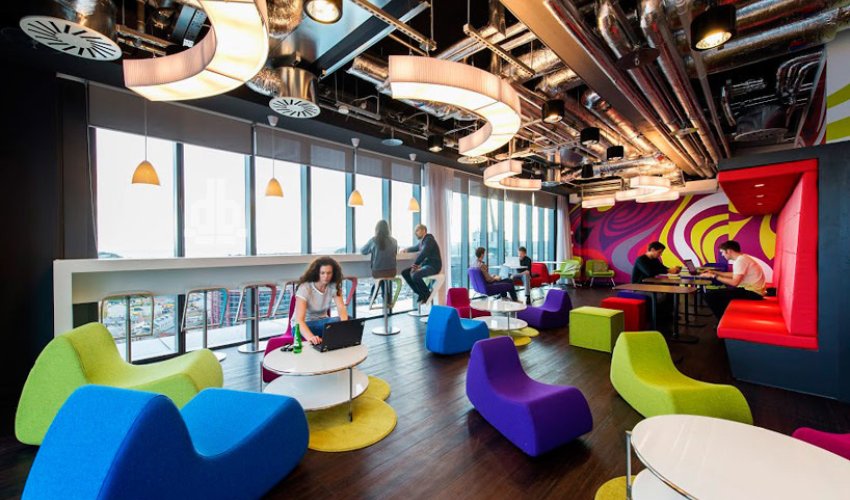Google’s Giant Testing Center - PHOTO

For example, Google’s free meals, famous for their quality, are a result of detailed study. Executives were turned off by the inefficiencies of an ordinary paid cafeteria; people would spend too much time going elsewhere for lunch — or fumbling for change if they stayed. Even if that was a waste of a minute, it was logical to make food fun and free.Google tries to measure as much as it can about its employees’ experience. When a new phone jack is installed at someone’s desk, the facilities staff will send an email within an hour, asking the employee to rate the experience for friendliness and efficiency. When green plants in a large frame are installed on an otherwise bland wall, it improves the look and increases the room’s beneficial oxygen, according to Anthony Ravitz, leader of the “Green Team” in Google Real Estate, the department responsible for the company’s facilities.Mr. Ravitz cited studies of “biophilia,” or love of nature and its effects on easing stress levels. “We are after the holy grail for the knowledge industry — how to measure productivity,” he said. “That isn’t just how quickly you can type words, or how well you made a line of code. It’s about how you felt about it, and whether you had enough energy to play with your kids when you got home.”To find out those things, Google Real Estate is more lab than furniture department. This is not to denigrate the humble chair: After an initial ergonomic evaluation, each new employee is fitted with the correct chair, which follows her if she is reassigned. During a reporter’s recent visit, Google Real Estate was testing five types of desk chairs, three relaxation chairs, 10 lighting systems, two heating systems and four ways to distribute heat. One woman at an adjustable desk walked on a treadmill as she worked, surrounded by greenery.“If people are more satisfied with the temperature, they are more comfortable and creative,” Mr. Ravitz said. The goal is to make 80 percent or more of the population happy with the office climate — a higher figure than at most companies.Google has 70 more offices in 40 countries worldwide, and works with designers in each place to maximize productivity and cut down on energy use. A Google employee badge should work in any of these places, but there are also nods to how space is used in local cultures. “Europe has more bench seating,” Mr. Ravitz said. Americans are chair people.Google, which started in a dorm room, at one time occupied a garage, and then a series of nondescript offices within its present campus, which also includes the old headquarters of Silicon Graphics, another valley company that couldn’t cope with change. Google employees now play volleyball in its once-staid quad. The real estate group can also issue tables for playing pool, foosball or table tennis. (Training time with a former Olympic table tennis coach books up quickly.) Much of the makeshift recreational space is compensation both for Google’s long hours and the reality that most of its buildings are from an older, duller era.The outsize dessert sculptures are one effort to break the monotony. A large statue of a man in a cage bears a passing resemblance to a young Bill Gates. No accident, according to Google lore.Mr. Ravitz’s team has ripped out ceilings and installed skylights where possible, because “studies in education and health care show natural light affects how quickly people learn and heal,” he said. Carefully hidden behind lightweight screens are “nap pods” where people can catch a few winks in enclosed silence. High-backed couches for two, custom-made without flame-retardant chemicals, have special cushions that cut down on noise.“The harder we work,” he said, “the more important it is to have space to get away from the chaos for a while.”(nytimes.com)ANN.Az
Latest news 




































 Photo
Photo 



 Video
Video 

